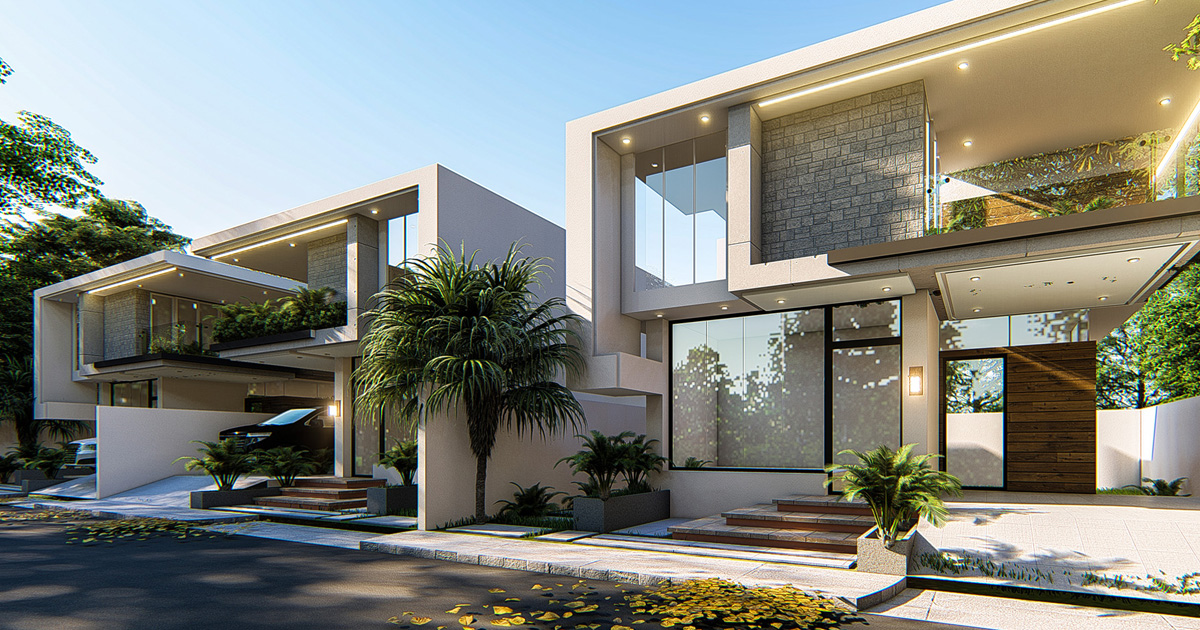Horizontal condominium projects are becoming an alternative method of development for sure developers. Here’s why. The Philippines’ real estate market has accelerated in recent years, owing to a consumption-driven market, a youthful populace, and a collectively aggressive economy. With the industry’s present and future success, it’s unsurprising that an increasing number of real estate developers are venturing into various condominium developments. Sometimes condominium developments are depicted as high-rise structures nestled away in active commercial areas outfitted with enhanced security and upscale facilities. However, another type of condominium development combines the communal luxuries of vertical condominiums while mimicking the planned neighborhood units of your typical subdivision.
What Is A Horizontal Condominium?
A condominium, as defined by Republic Act No. 4726, or “The Condominium Act,” is composed of “divided” and “undivided” interests. Separated or distinct interests may refer to the structure itself, whether residential, commercial, or industrial construction divided and sold into different sections. Undivided interests include the asset itself and shared facilities such as playgrounds, gyms, and function rooms.
Horizontal condominiums work similarly to vertical condominiums in concept since the term “condominium” relates to ownerships of divided interests. In contrast to their high-rise counterparts, their development type resemble typical suburban houses or villa resorts.
Horizontal or detached condos are clusters of residences on land assets that provide tenants with a variety of recreational and security amenities. Each home has a floor size of between 100 and 300 square meters and is two floors tall, with room for one or more automobiles in the garage. It may accommodate up to five bedrooms, each with an en-suite bathroom and high-end comforts.
Real Estate For The Foreign Market
Permission to own condominium units is granted to foreigners as long as the percentage of foreigners owning condo units in a development project does not exceed 40% of Filipino-owned condominium corporation shares.
The majority of condominium units’ location is in high-rise structures. However, other property developments in the Philippines are offering single-detached homes or private villas with condominium ownership. Although the buildings are co-owned, the developers retain ownership of the property.
Foreign nationals or corporations may also own a condominium or townhouse in the Philippines. They may form a Philippine corporation to purchase residential real estate and land and commercial real estate and land.
What Caused The Development Of Horizontal Condominium Projects?
The worldwide crisis of 2008-2009 necessitated the development of new housing plans that provided more economic flexibility for both developers and prospective buyers. This resulted in a project model resembling a typical house that sells as a fee-simple condominium.
While a horizontal or detached condominium does not have its legal lot, it is also separate from another structure. This arrangement enables developers to squeeze homes with 10-meter by 20-meter footprints between 1.5-meter gaps, with access roads maintained and administered privately by the homeowners’ organization. The business offer enabled first-time homeowners to purchase a three-bedroom, two-bathroom house for a lot less than an identical model inside a regular subdivision.
Financially speaking, detached condominiums resonated better with the recession than the conventional vertically attached condominium. Since proposed vertical condominiums require 60% of their units to be pre-sold before actual construction with a 20% down payment for each buyer, this business approach seems unfit for the then-existing crisis.
On the other hand, developers may build detached condominiums separately. They are breaking ground only on sold units. In hindsight, this focus on building footprint and infrastructure packed at greater densities resulted in reduced construction and economic risks for purchasers and developers. The detached or horizontal condominium was a modest answer to the world’s housing crisis about a decade ago.
The Difference Between Attached and Detached Homes
Two main elements distinguish detached condominiums to attached (townhouse) and detached (single-family) homes. Those are ownership and maintenance responsibilities.
In detached condominiums, residents only own the interiors of their units plus one share of all the complex, including the driveways, pool, roofs, siding, and the likes. A homeowners’ association is responsible for maintaining the common areas, requiring owners to pay corresponding monthly dues. The same organization is also handling complaints, planning future expenses, and limiting pets, vehicles, and outdoor furniture allowed on-site.
A detached condominium and an attached home (townhouse) have a homeowners’ association, but the attached home owns the whole structure, including the roof and the ground below it.
While a homeowners’ association still prevails over these properties, their sole purpose in neighborhoods is to enforce rules, not to maintain the overall physique of the community.
Benefits Of Horizontal Condominium Units
Without the duties of the land asset, detached or horizontal condominium units are by default more affordable compared to other types of housing developments.
Additionally, despite the notion of their affordability, these developments still offer a wide variety of similar leisure and luxury amenities present in vertical condominiums such as swimming pools, party rooms, wellness centers, gyms, gardens, parks, and more.
Detached condominiums are also a wise option for tenants who want to live in a safe place since these residential projects planned for a gated community offer reliable protection.
The Disadvantage of Owning A Horizontal Condominium Residence
Like all condominium projects, the restrictions and rules of the condominium corporation govern all tenants. By far, the only noted disadvantage of detached condominiums has to comply with the same laws followed by every other resident inside the community. Although this may be uncomfortable for a few, the perks associated with these developments outweigh the negatives.
The Long Position Real Estate Strategy
The real estate market has changed a lot in the past few decades. Horizontal condominiums have become more prevalent because of these changing trends. With all the benefits of retaining land ownership and opening to foreign currency investments, numerous future property developers are sure to invest in horizontal condominium constructions to increase their company profits.
